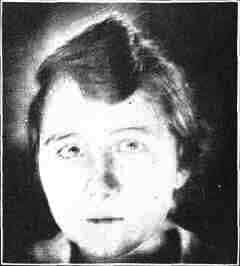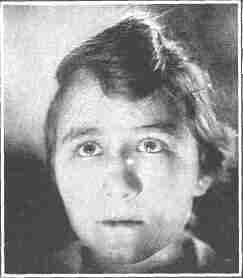Strengthening the Eyes
by Bernarr A. MacFadden А. Макфеден
CHAPTER X
Strabismus: Squint
In the following is presented a cure, the efficacy of which has been tested in numerous cases, for one of the most distressing and disfiguring of eye complaints. Only approximately curable by any of the means heretofore used, it has been found that squint always yields to eye training when persistently and intelligently used.
SQUINT, or strabismus, as it is called scientifically, is one of the vexed problems of ophthalmology. Many curious suggestions, both popular and scientific, have been made as to its cause. None of these theories come anywhere near to agreement, and while some seem to fit some cases, they leave many others unexplained.
The first definitely scientific theory advanced to account for squint was that it was due to an abnormality of the muscles which turn the eyeball in the socket. This theory seemed so plausible that it was almost universally accepted at one time, and an era of operations ensued, with many disastrous results.
Then Donders advanced his accommodation theory, which immediately came into vogue. This theory is based on the fact that when the eyes look at a near object there is not only a change of focus, but the visual axes, which are parallel when the object of vision is a distant one, are turned slightly inward. These two acts, accommodation and convergence, being always performed together, have become associated by hereditary habit so that it is difficult to converge without accommodation. Donders concluded, therefore, that an abnormal effort of accommodation resulted in abnormal convergence.

A typical case of convergent squint or "cross eyes."
According to another theory, the essential or underlying cause is a congenital defect in the "fusion faculty," of the power of co-ordinating the two visual images, resulting in the development of a squint on the slightest provocation.
The truth is that squint is a purely functional defect. Some persons can produce it at will, and it is frequently produced in persons with normal eyes, both children and adults, when they try unsuccessfully to read the Snellen test card. When the eyes are not properly used, the optic axes are never parallel, although the defect is not usually sufficient to attract attention.
Squint can be cured by the same methods recommended for errors of refraction, and it is also helpful to learn how to squint voluntarily. These methods not only straighten the eye, but cure the imperfect sight which is almost invariably associated with squint. Operations, even when successful—and often they make the condition worse—are not expected to do anything more than approximately straighten the eye. They do not improve the sight.

The same patient cured by rational methods of eye training.
| Уход за глазамиФизикаНаука БейтсаТехнол.ФорумЛазер. коррек.Синя. под глаз.Зуд, жжения в глазахВраче. тайнаДр. болезни | |




